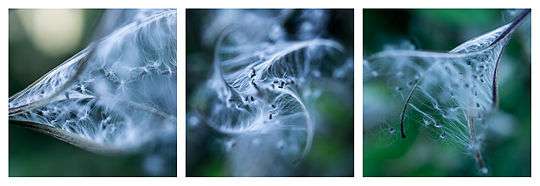Epilobium hirsutum
| Epilobium hirsutum | |
|---|---|
 | |
| Scientific classification | |
| Kingdom: | Plantae |
| (unranked): | Angiosperms |
| (unranked): | Eudicots |
| (unranked): | Rosids |
| Order: | Myrtales |
| Family: | Onagraceae |
| Genus: | Epilobium |
| Species: | E. hirsutum |
| Binomial name | |
| Epilobium hirsutum L. | |
| Synonyms[1] | |
| |
Epilobium hirsutum is a flowering plant belonging to the willowherb genus Epilobium in the family Onagraceae. It is commonly known as the great willowherb, great hairy willowherb or hairy willowherb.[2] Local names include codlins-and-cream, apple-pie and cherry-pie.

Description
It is a tall, perennial plant, reaching up to 2 metres in height. The robust stems are profusely hairy with soft spreading hairs.[3]:160[4] The hairy leaves are 2–12 cm long and 0.5-3.5 cm wide. They are long and thin and are widest below the middle. They have sharply toothed edges and no stalk. The large flowers have four notched petals. These are purple-pink and are usually 10–16 mm long.[5]:357 The stigma is white and has four lobes. The sepals are green.
Distribution
The native range of the species includes North Africa, most of Europe up to southern Sweden,[6] and parts of Asia. It is absent from much of Scandinavia and north-west Scotland. It has been introduced to North America[2] and Australia. It typically grows in wet or damp habitats without dense tree-cover up to 2,500 metres above sea-level. Common habitats include marshland, ditches and the banks of rivers and streams. It flowers from June to September, with a peak in July and August. The flowers are visited by many types of insects, and can be characterized by a generalized pollination syndrome.[7] A number of insects feed on the leaves including the elephant hawkmoth, Deilephila elpenor.
Ecology
Damp and waste places, river-sides and ditches.[8]
Trichomes
The plant shows glandular trichomes. They are unicellular, without a specialized basal cell. They have a cutinized cell wall and a protruding pore on the top. The upper part of the trichome cell contains flavonoids, e.g. quercitrin and myricitrin.[9]

References
- ↑ "The Plant List: A Working List of All Plant Species". Retrieved 20 November 2014.
- 1 2 "Non-native Freshwater Plants: Hairy Willow-Herb". Washington State Department of Ecology. 2006. Retrieved 6 September 2016.
- ↑ Blamey, M.; Fitter, R.; Fitter, A (2003). Wild flowers of Britain and Ireland: The Complete Guide to the British and Irish Flora. London: A & C Black. ISBN 978-1408179505.
- ↑ Martin, W. Keble 1965. The New Concise British Flora in Colour; with nomenclature edited and revised by Douglas H. Kent and foreword by The Duke of Edinburgh. London: Book Club Associates by arrangement with Ebury Press/ Michael Joseph (1982)
- ↑ Stace, C.A. (2010). New flora of the British isles (Third ed.). Cambridge, U.K.: Cambridge University Press. ISBN 9780521707725.
- ↑ "Rosendunört, Epilobium hirsutum" (in Swedish). Naturhistoriska riksmuseet. 1997. Retrieved 6 September 2016.
- ↑ Van Der Kooi, C. J.; Pen, I.; Staal, M.; Stavenga, D. G.; Elzenga, J. T. M. (2015). "Competition for pollinators and intra-communal spectral dissimilarity of flowers" (PDF). Plant Biology. doi:10.1111/plb.12328.
- ↑ Webb, D,A., Parnell, J. and Doogue, D. 1996. An Irish Flora. Dundalgan Press (W.Tempest) Ltd. Dundalk. ISBN 0-85221-131-7
- ↑ Krajšek; et al. (2011). "Morphology and glandular activity of unicellular trichomes of Epilobium hirsutum". Biologia Plantarum. 55 (1): 149–152. doi:10.1007/s10535-011-0020-z.
| Wikimedia Commons has media related to Epilobium hirsutum. |
- Blamey, Marjorie & Grey-Wilson, Christopher (2003) Cassell's Wild Flowers of Britain and Northern Europe, Cassell, London.
- Press, J. R.; Sutton, D. A. & Tebbs, B. M. (1981) Field Guide to the Wild Flowers of Britain, Readers Digest, London.
- Tutin, T. G. et al. (1968) Flora Europaea, Volume 2. Cambridge University Press. ISBN 0-521-06662-X